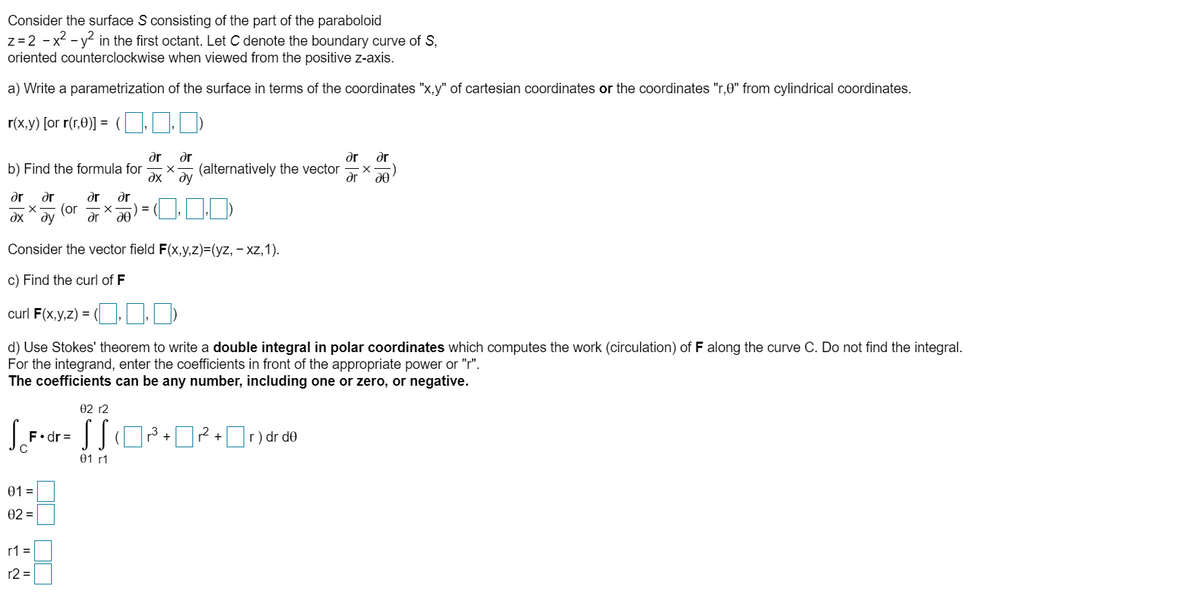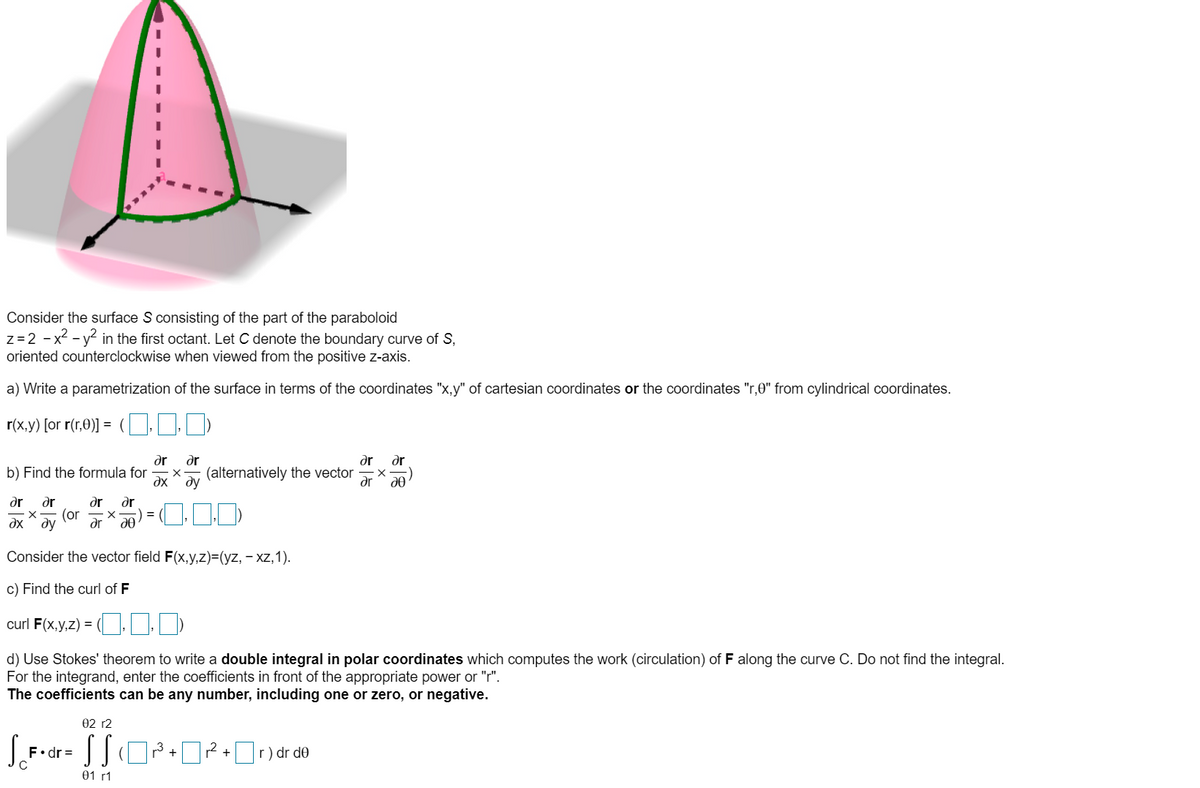
Extracted text: Consider the surface S consisting of the part of the paraboloid z=2 - x2 - y? in the first octant. Let C denote the boundary curve of S, oriented counterclockwise when viewed from the positive z-axis. a) Write a parametrization of the surface in terms of the coordinates "x,y" of cartesian coordinates or the coordinates "r,0" from cylindrical coordinates. r(x,y) [or r(r,0)] = ar b) Find the formula for dr dr ar (alternatively the vector ду dr xe dr ar ar ar (or dr = he Consider the vector field F(x,y,z)=(yz, – xz,1). dx c) Find the curl of F curl F(x,y,z) = (, ) d) Use Stokes' theorem to write a double integral in polar coordinates which computes the work (circulation) of F along the curve C. Do not find the integral. For the integrand, enter the coefficients in front of the appropriate power or "r". The coefficients can be any number, including one or zero, or negative. 02 r2 F•dr = r) dr do + 01 r1 01 = 02 = r1 = r2 =

Extracted text: Consider the surface S consisting of the part of the paraboloid z=2 - x2 - y2 in the first octant. Let C denote the boundary curve of S, oriented counterclockwise when viewed from the positive z-axis. a) Write a parametrization of the surface in terms of the coordinates "x,y" of cartesian coordinates or the coordinates "r,0" from cylindrical coordinates. r(x,y) [or r(r,0)] = ( dr ar dr dr b) Find the formula for dx (alternatively the vector ду ar dr ar ar dr (or dx ^ ay dr Consider the vector field F(x,y,z)=(yz, – xz,1). c) Find the curl of F curl F(x,y,z) = (. ) d) Use Stokes' theorem to write a double integral in polar coordinates which computes the work (circulation) of F along the curve C. Do not find the integral. For the integrand, enter the coefficients in front of the appropriate power or "r". The coefficients can be any number, including one or zero, or negative. 02 r2 F•dr = r2 01 г1